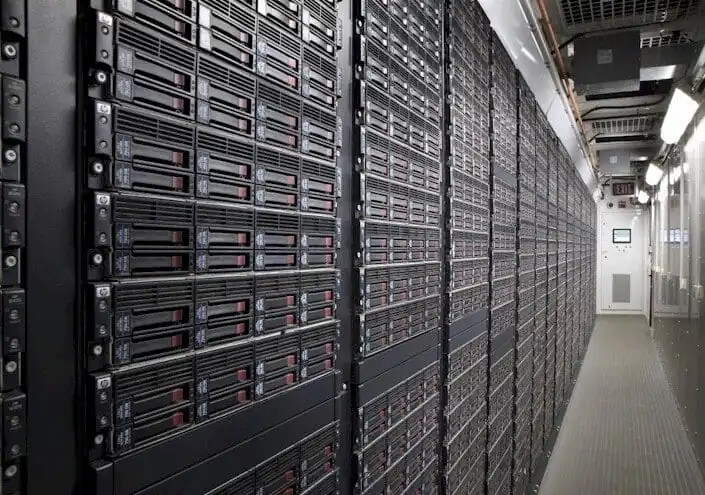7 Tips to Reduce Energy Costs and Protect IT in the Federal Data Center9 min read

Today’s federal data centers are seeing a myriad of changes including consolidation, virtualization, dense architecture, and converged infrastructure, among many others. All of which are driving needs for better energy efficiency in the data center. Primarily to protect the millions of dollars invested in IT equipment and modernization, and reduce federal energy costs, particularly when and where energy and cooling is being wasted and unnecessarily inefficient.
The private sector has rushed to optimize energy efficiency in their data centers (both enterprise and colos), due to CFO, CIO, and managerial oversight on energy spend and finding any way to reduce costs. However the federal sector has lagged at times due to “blackbox” thinking and spending, where the cooling spend may be isolated from the IT spend, for example. New pending and existing federal mandates may help change that scenario irrevocably, like HR540. Congresswoman Anna Eshoo (D-California) has proposed legislation to guide the energy usage for federal data centers in an effort to foster energy-efficiency best practices. The legislation is currently pending in the U.S. House of Representatives with a companion sponsored by Senator Frisch (R-Idaho) working its way through the Senate.
How to Be Prepared
So… How do you prepare for such a tidal wave of energy efficiency directives? Here are seven tips, or rather questions to ask yourself, to help you become more prepared and knowledgeable about airflow management, cooling efficiencies, and energy consumption in your federal data center:
1. Assessment: Where are you today in optimizing your directional cooling/reducing cooling waste in your data center? How do you know? Are you properly educated in data center airflow management? Speaking to and/or engaging with a professionally accredited airflow management expert to assess your data center is an imperative start. The industry and science behind assessments of energy consumption and airflow management has matured exponentially in the past decade and there are professional engineers who can now conduct an assessment of your data center to reveal stranded and misdirected cooling, determining where and what exactly can be done to remedy these cooling losses, and, as a byproduct, ways to protect your extremely valuable IT equipment by directing cold and hot air appropriately.
2. Know what areas to assess. Are there visible holes allowing bypass airflow to occur? In other words, cool air going elsewhere besides its intended target (your valuable IT equipment). Bypass airflow can occur in various areas, but most common are unsealed cable openings and through ceilings. Products like brush grommets solve this issue and are readily available, and are much more reasonable than replacing overheated IT equipment or buying another CRAC unit.
3. What about empty U spaces in your rack? Are you cooling these “holes” needlessly, because they’re uncovered, instead of only the IT equipment in the rack? Once again this bypass airflow constitutes an unnecessary cooling waste that is not often readily apparent. Installing blanking panels to seal these openings will prevent cool air from flowing into an empty U space, and instead directed towards rack-resident IT equipment only.
4. We’ve talked about directing cool air appropriately and reducing or eliminating cool air bypass/waste. What about heat generated by the equipment in the data center? Where does it go, and is it being directed away from the essential IT equipment? Heat can wrap around and endanger IT equipment without using products to contain your racks and/or redirect the hot air optimally. Full and partial containment, as well as directional baffles, can prevent this dangerous heat wraparound from occurring. Regardless of the solution chosen, ensure cold aisle/hot aisle optimization and redirect hot air away from the rack.
5. Do you have sensors to identify and isolate hot spots to help protect your sensitive and expensive IT and networking equipment?
6. Now that you’re more cognizant about cooling and energy wasting in your data center, what’s next? How about consulting with the payer of your data center’s utility bill about your newfound knowledge on how to reduce cooling costs by potentially 40% or more, thereby reducing the bottom line and your part of the federal spend. What’s the potential savings in dollars per year, per five years?
7. Are you aware of initiatives that exist or are emerging in the federal sector to mandate or request energy efficient methodologies in the data center? The initiatives and impending legislation actions are many, but most of all, U.S. taxpayers desire to see our federal dollar spent well, efficiently, and that government wastes be reduced.
Conclusion
Giving a thorough inspection, assessment, and analysis to your existing data center can prepare you for the legislative directives coming downstream. The Federal Government must reduce energy costs and increase the protection of existing and future imperative IT investments in the data center for both federal employees and for the tax-payers who already note that the commercial sector is wisely implementing modern airflow management best practices to reduce energy consumption and insure their IT investments. For more information on implementing airflow management initiatives and reducing energy consumption in federal data centers, please visit our Federal Data Center page.
1 Comment
Submit a Comment
Airflow Management Awareness Month
Free Informative webinars every Tuesday in June.
thanks